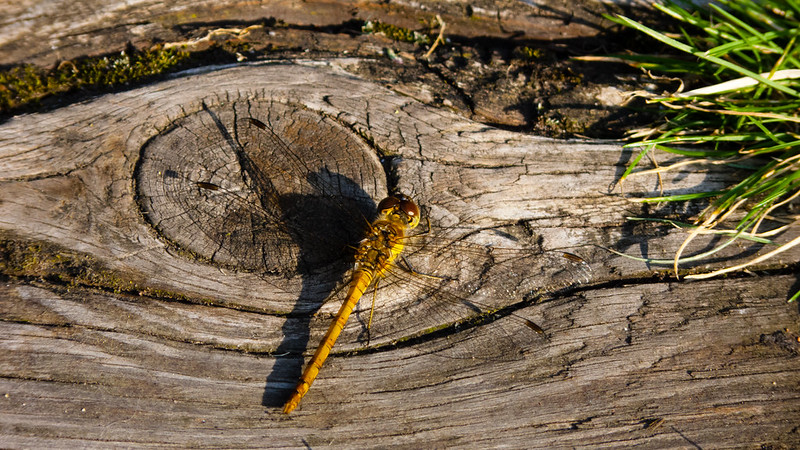Peacock butterfly caterpillars, their bodies covered in hair and barbed spikes to deter possible predators by promising an uncomfortable mouth for anything trying to eat them. These were on nettles, the food plant.
Stratford barley field
Close-ups of ripe barley seen from a footpath by a field on the ridge between the Warwickshire Avon and Stour valleys – to me they look like a hypnotic vortex.
A wider view shows a landscape with Stratford landmarks peeping over the tree line. Almost dead centre is the Royal Shakespeare Company theatre. Further to the left is the spire of All Saints Church, where the playwright was buried
Clifford Chambers birds: tree creeper, goldcrest, spotted flycatcher
Clifford Chambers is a small village in the valley of the river Stour a couple of miles from Stratford on Avon. By the gate to the Manor House there is an old and large conifer: a sequoia (Wellingtonia). Possibly it was planted when the manor was built, making it a little over 300 years old.
It is tall and spreading, and evidently has an insect population and lots of potential nest sites to support a range of bird species. A tree creeper (main picture) was moving along a big bough, keeping its tail close to the tree for extra support. On the next bough was a goldcrest.
A young spotted flycatcher kept feeding, then retreating to perch on what was clearly a regular haunt on one of the posts on the village green opposite.
Also present, but retreating behind branches before I could get a sharp focus on them, were nuthatches, coal tits, chaffinches, goldfinches and song thrushes.
Clifford Chambers village is build along a dead-end side road. It’s about a five mile circular walk from Stratford along quiet but (mostly) well-maintained footpaths. As the path crosses the gentle ridge between the Stour and Avon valleys it gives views across to the nearby Cotswolds, and across the Avon to Stratford and the seemingly still well-wooded Arden area on the other side of the river.
The village is pleasant without falling into cloying chocolate boxiness. The aforementioned Manor House is Queen Anne style. Between it and the river is a one-time mill, now I guess an imposing private house. The mill wheel is still in place, and the former mill pond is now the home to healthy-looking water lilies.
Several of the houses in the village are in the midlands black and white style. One, immediately next to the church, is large and impressive. It must have been the original manor house. There is some more recent housing, but almost all built in style which do not jar with the remaining older structures. The impression of harmony (at least to this casual passer-through) was reinforced by the obviously well cared for cottage gardens everywhere they could be seen.
Pictures in the Park, August 3rd
Himalayan Balsam Flower
Snail with a narrow shell
Damselfly caught in a web
Alpine primula
Bellflowers
Common darter on the wing
Male common darter dragonfly patrolling its territory over one lobe of the new pool at Compton Park.
A resting female of the same species featured as one of yesterday’s posts.
Pink yarrow flowers
Female common darter
My favourite way to watch wildlife is in the outdoors section of a pub, with a nice pint in front of me.
This common dater landed on the edge of the car park of the Combermere Arms, not far from the table where I was sitting. It stayed long enough for me to get my camera out and fire off a few shots. It then flew off, circled the car park several times, before landing in the same sunny spot for another few minutes.
Common darters are small and common (duh) British dragonflies. This one was a female: the males are redder.


















